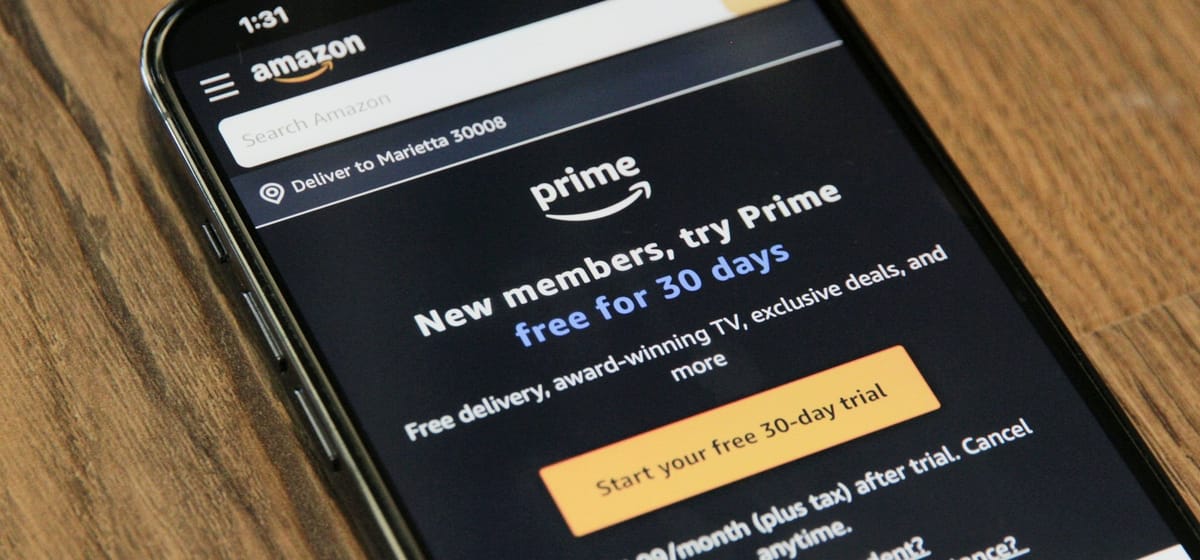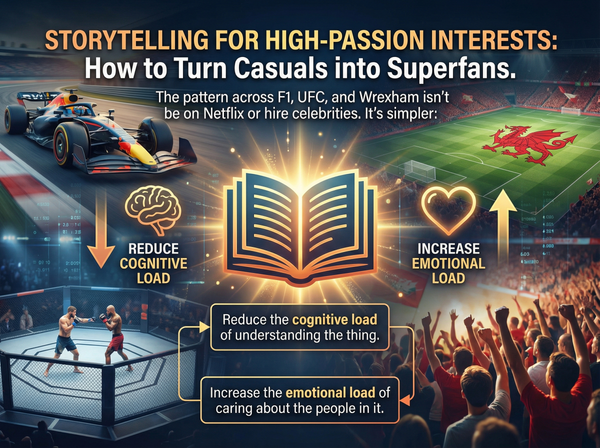7 Proven Subscription Hacks That Keep Customers Coming Back

Acquiring new customers is only half the battle. The real challenge—and opportunity—lies in keeping them engaged month after month, transforming one-time buyers into loyal, long-term subscribers.
The average monthly churn rate across industries hovers around 5-7%, with some sectors seeing rates as high as 10%. This means many businesses are essentially running on a treadmill, constantly acquiring new customers just to replace the ones walking out the door. Even worse, acquiring a new customer costs 5-25x more than retaining an existing one.
But what if there was a better way?
The Everyday Dose Masterclass: Turning Subscriptions Into Games
Everyday Dose' approach is brilliant in its simplicity. Instead of treating subscriptions as a passive monthly transaction, they've transformed the entire experience into an engaging journey.
They use monthly milestone rewards. Subscribers don't just receive their regular product—they unlock surprise gifts at key subscription milestones.

They've created a system where canceling doesn't just mean losing a product—it means losing progress (streak) in a game they're winning.
7 Subscription Hacks (That Actually Move the Needle)
1. The Milestone Reward System
What it is: Structured gifts and bonuses at predetermined subscription milestones that create anticipation and reward loyalty over time.
Why it works: This taps into the psychological principle of intermittent reinforcement—the same mechanism that makes slot machines addictive. When rewards come at unpredictable intervals, engagement actually increases. Plus, it creates a progress trap where customers don't want to lose their advancement.
Implementation details:
- Start rewards early (month 1-2) to create immediate value perception
- Make rewards feel substantial but keep costs manageable (aim for 5-8% of subscription value)
- Create themed reward tracks (wellness items for health subscriptions, exclusive content for educational services)
- Use surprise timing occasionally—not every reward needs to be predictable
Real example: A meal kit service gives custom spice blends at month 2, premium kitchen tools at month 6, and a chef's cookbook at month 12.
2. Hyper-Personalized Experiences
What it is: Using subscriber data to deliver tailored content, product recommendations, and exclusive offers that feel custom-built for each individual.
Why it works: Personalization makes customers feel understood and valued. When Netflix recommends shows you actually want to watch, or Spotify creates playlists that match your mood perfectly, it becomes harder to imagine life without these services.
Implementation details:
- Layer personalization gradually: start with purchase history, add browsing behavior, then incorporate preference surveys
- Create personal dashboards showing individual progress, achievements, or customized insights
- Use dynamic email content that changes based on subscriber segments
- Implement behavioral triggers (e.g., if someone hasn't logged in for 10 days, send a we miss you email with personalized content)
Real example: A fitness app creates personalized workout plans based on equipment available, fitness level, and previous workout completion rates, then adjusts difficulty automatically.
3. Exclusive Community Access
What it is: Members-only forums, Discord channels, or social media groups where subscribers connect with each other and access exclusive content or expert interactions.
Why it works: Humans are tribal by nature. When customers invest time building relationships and reputation within your community, leaving means losing social connections and status—a powerful retention force.
Implementation details:
- Assign community roles and badges to create status hierarchies
- Host regular live events (AMAs, workshops, challenges) exclusively for members
- Encourage user-generated content and peer-to-peer support
- Have team members actively participate, not just moderate
- Create sub-communities around specific interests or experience levels
Real example: A business education platform creates tiered Slack channels where subscribers can network, share wins, get feedback on projects, and access monthly office hours with industry experts.
4. Tiered Benefits with Clear Upgrade Paths
What it is: Multiple subscription levels with escalating perks and obvious value progression that encourages both initial sign-ups and account growth.
Why it works: Tiered systems satisfy different customer segments while creating natural expansion revenue opportunities. They also trigger the endowment effect—once customers experience premium features, downgrading feels like a loss.
Implementation details:
- Make the value difference between tiers obvious and substantial (not just cosmetic changes)
- Offer taste tests of higher tiers (limited-time upgrades, feature previews)
- Use clear upgrade prompts when users hit tier limitations
- Create seasonal promotions that make upgrading irresistible
- Track and optimize the upgrade funnel like you would any conversion process
Real example: A project management tool offers basic features for $10/month, advanced reporting and integrations for $25/month, and unlimited everything plus priority support for $50/month, with clear feature matrices showing exactly what you get at each level.
5. Strategic Surprise and Delight
What it is: Unexpected bonuses, handwritten notes, or personalized gestures that go beyond the standard offering to create memorable positive experiences.
Why it works: Surprise activates the brain's reward system more powerfully than expected rewards. These moments create positive emotional associations that customers remember and share with others.
Implementation details:
- Track customer milestones (birthdays, anniversaries, major life events shared on social media)
- Create seasonal surprise campaigns tied to holidays or company milestones
- Identify at-risk customers and surprise them with special attention before they churn
- Train customer service to look for surprise opportunities during interactions
- Keep surprises authentic to your brand voice and values
Real example: An online learning platform sends a custom illustration of each student's learning journey after they complete their first course, along with a handwritten note from their instructor.
6. Proactive, Empathetic Customer Service
What it is: Making support incredibly easy to access while focusing on resolution speed, empathy, and turning problems into relationship-building opportunities.
Why it works: Studies show that customers who have a problem resolved quickly and empathetically often become more loyal than those who never had a problem at all. It's called the service recovery paradox.
Implementation details:
- Implement proactive outreach when you detect usage drops or potential issues
- Create customer health scores that trigger different support approaches
- Empower support agents with retention tools (discounts, account credits, premium feature access)
- Use chatbots for initial triage but ensure easy escalation to humans
- Track not just resolution time but resolution satisfaction and long-term retention impact
Real example: A software company monitors user behavior and automatically reaches out when someone hasn't logged in for 14 days, offering a free consultation call to help them get more value from the platform.
7. Mutual-Benefit Referral Programs
What it is: Rewarding both existing subscribers and new referrals with meaningful incentives that make sharing your service a no-brainer.
Why it works: People trust recommendations from friends far more than advertising. When you reward advocacy, you turn customers into a distributed sales force while reinforcing their commitment to your service.
Implementation details:
- Make rewards valuable enough to motivate action (typically 1-2 months of service value)
- Offer different reward types (account credits, exclusive products, service upgrades)
- Create time-limited referral bonuses to create urgency
- Provide referrers with shareable content, templates, and tracking tools
- Celebrate successful referrers publicly to encourage others
Real example: A meal planning service gives both the referrer and referee a free week of premium meal plans, plus enters referrers into monthly drawings for cooking classes with celebrity chefs.
The Psychology Behind the Stickiness
These tactics succeed because they tap into fundamental human drives:
- Reciprocity: When you consistently deliver unexpected value, customers feel compelled to reciprocate with loyalty. It's why free samples work so well.
- Loss Aversion: The fear of losing progress, status, or access is often 2x stronger than the desire to gain something equivalent. Milestones and communities create things customers don't want to lose.
- Social Connection: Exclusive communities satisfy our deep need to belong. When canceling means losing friendships or status, the switching cost becomes emotional, not just financial.
- Commitment and Consistency: Once customers invest time, energy, or identity into your service, they're motivated to act consistently with that investment.
Measuring What Matters: Key Metrics to Track
Primary Metrics:
- Monthly Churn Rate: Track cohorts, not just overall averages. Aim for <5% monthly churn
- Customer Lifetime Value: Should increase as retention improves. Calculate by segment
- Monthly Recurring Revenue Growth Rate: The compound effect of better retention
Engagement Metrics:
- Community Activity: Posts, comments, session duration in member areas
- Feature Adoption: How many customers use your retention features
- Support Interaction Quality: Resolution satisfaction scores and subsequent behavior
Leading Indicators:
- Days Since Last Login: Identifies at-risk customers before they churn
- Milestone Progress: Are customers progressing through your reward system?
- Referral Activity: Happy customers naturally become advocates
Test, Learn, and Evolve
No two businesses are exactly alike, and what works wonders for one might need tweaking for another.
The most effective approach to subscription hacks is one of continuous experimentation and iteration. Start with a few ideas that resonate most with your audience and brand. Measure their impact, gather feedback, and be prepared to adapt.
The companies that master retention compound their growth while competitors burn cash and thus margins on acquisition treadmills.
Keep Crushing!
- Sales Guy


